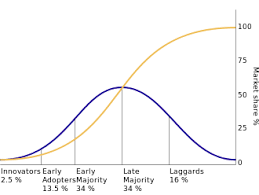Mindframes by Wendy Gordon should be compulsory reading for anyone in marketing and market research, synthesizing the learnings of a career spanning 50 years into six over-arching principles for understanding people’s behaviour. These principles can help all of us be more rigorous in our thinking and more sensitive in the way we interpret human behaviour.
She starts with the view that different methods and perspectives can give different answers (quoting The Blind Men and the Elephant), as well as the underlying assumption that people “don’t always say what they mean and don’t always mean what they say”. Her book reminded me of Sensemaking by Christian Madjsberg, but with added behavioural economics thinking and practical perspective based on a lifetime of experience.
We all know that the basic premise of research, that you can ask people what they think and do and get an honest, fair and accurate answer, is deeply flawed. As Wendy Gordon says, “The hidden assumption [of research] is that people act intentionally and with good reason; the motivations or triggers for behaviour are entirely available to conscious recall and communication.” This is clearly an insupportable assumption.
That doesn’t mean that the shortcomings inherent in many research approaches can’t be overcome by sound thinking, multiple perspectives and clear thinking about the reality and context of human lives. Her six principles are the Unconscious (or rather non-conscious), Making sense of difference, Liking, Why we behave like we do, Language and Context.
The unconscious
Wendy Gordon argues that unconscious is better understood as non-conscious, a more accurate and less pejorative term to describe the vast majority of human behaviour that is automated (and mostly unavailable to introspection).
She uses the metaphor of the autopilot and pilot as useful in thinking about behaviour. Pilots make decisions that require knowledge and flexible thinking such as take-off and landing, even if much of this is still automated, and can deal with problems that may occur during a flight. The autopilot takes care of the rest and is responsible for all the decisions that are made automatically once airborne. A plane can fly itself for most of a flight without the pilot being aware of any of the calculations and adjustments that are taking place. When considering a research challenge, consider which aspects of a behaviour reflect pilot or autopilot.
Making sense of differences
Wendy Gordon’s second principle focuses on how it is much easier to understand people by understanding how they are different from other people, or how they differ within themselves in their multiple facets and personas.
Liking
Wendy Gordon’s third principle focuses on the difficulty in using liking as a useful construct in research. As she says, “The moral of this tale is that asking people directly about likes and dislikes is dangerous. It requires the individual to reflect, to consider and to rationalize or explain. It is a System 2 question.”
By this Wendy Gordon means that liking is a post hoc construct, a way for people to rationalize and explain their previous behaviour. She shares a framework for understanding the different drivers of liking, including ingenuity, meaningfulness, energy, warmth and not being dislikeable (“does not rub up the wrong way”).
Why we behave like we do
Wendy Gordon’s fourth principle explores the role of attitudes and opinions in driving behaviour (or behaviour’s role in shaping attitudes?). She quotes Carl Jung who defined attitude as, “the readiness of the psyche to act or react in a certain way based on an underlying psychological orientation.” Put more succinctly, attitude is orientation.
Language – beneath the surface of words.
Wendy Gordon writes, “words are slippery. We assume that everyone understands the same thing. They don’t.” Wendy Gordon points out the relationship between language and culture, and the growing understanding that culture and language shape the way that we all think. As she says, “Language and culture are inextricably intertwined. Words do not describe objective reality.”
She discusses how researchers should always think about how words are binary (and always have opposites), how they actively shape perceptions, that they are never neutral and that they often are vehicles to convey people’s identity and relationship with other people. I loved her term “fat words”, used to express that we think that words and ideas have a universal meaning when they don’t. We may have a clear idea about a concept, but it may have multiple meanings to different people.
Context- the ripples of meaning
Wendy Gordon writes that “context is the key to all human behaviour”. In writing about context, she is concerned with the mostly invisible influences that shape a situation (“both the inner and the outer circumstances or facts”).
As she says, ““In my experience, the majority of those who commission research, as well as those of us who are practitioners, tend to define our enquiry in terms of individual motivations, drives and behaviours … We have a blind spot about social influence because it is more difficult to detect and, in some strange way, diminishes our sense of independence and self-esteem … As a practicing researcher, you cannot ask people whether or not they are influenced by or copy others, because they will deny it.”
This final principle is the most important of all. The fundamental attribution error in psychology and research is the tendency to explain behaviours by individual traits and motivations rather than the (social and cultural) context of that behaviour.
Mindframes is a stimulating and refreshing read, rich with a lifetime of experience in talking with people and trying to understand how they live and why they do what they do. Whatever your experience and knowledge, you will learn much from reading this book.
[This is one of ten books I recommend market researchers to read if they time on their hands and are trapped at home. You can find the other recommendations here.]





